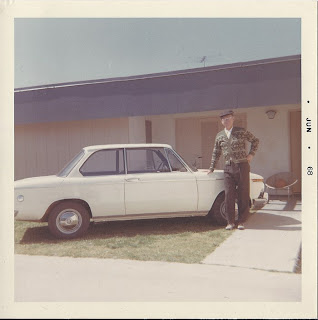When I designed my LED brake lights, I took the Lumens output of a sylvania 1157 bulb
http://www.sylvania.com/ConsumerProducts/AutomotiveLighting/SignalAndBrakeLights/Signal+and+Brake+Products/
260-500 Lumens
I used the calculator: http://led.linear1.org/lumen.wiz
I've tried several LED's. The are continually getting better.
1. http://www.ebay.com/itm/200pcs-High-Power-0-5W-5-chips-5mm-Red-LED-Lamp-80Kmcd-/370373792748?pt=LH_DefaultDomain_0&hash=item563bff93ec#ht_3561wt_1396
These are 80,000 millicandella (mcd) at 40 degrees. The calculator gives me 30 Lumens. I want 1000 lumens which is the max output of 2 sylvania bulbs.
I need 33 LEDs on each board.
2. If I were buying more and redoing it today I'd use these:
http://www.ebay.com/itm/10p-0-5W-5-Chips-8mm-StrawHat-Red-LED-Light-100-000mcd-/350347186105?pt=LH_DefaultDomain_0&hash=item519251cfb9#ht_3702wt_1396
These are incredible. 95,000 mcd at 140 degrees. When you run it through the lumen calculator you see 392 lumens. That is in the range of standard bulb!! If you put 2 or 3 of these ones you'd be much much brighter than a standard bulb.
When you get bigger with the LED's you use a few things become very important. You need to protect the LED's from voltage spikes caused by the starter,etc. The LED's can last a long time if you take care of them. They will degrade quite a bit if you have too much/too little Current or voltage.
National Semiconductor launched a Automotive LED design center on it's website:
http://www.national.com/en/led/automotive_lighting.html
If you really want to geek out on it, you can watch the videos that national put together. There is some really good info relating current, voltage, temperature, etc.
http://www.national.com/en/automotive/videos.html
The intro ones videos have some good basic stuff and really go into the explanations:
http://videos.national.com/national/2009/intro_hb_led/index.html
Their is a good video where they compare the types of drivers. The bottom line is you need one or your LED's will be worthless quickly.
The 2002s.net design is done quite well. They take all this into consideration and deliver a really good solution. Once you start to look at what is involved in putting together a solution that is reliable you'll see why theirs is expensive.
Personally I want there to be a solution that separates the different parts.
1. LED's - this is easy, you can pick them up all day on ebay
2. Driver - I think there should be a driver that regulates and protects the LED's. Also I'd like to use both the driving light and stop light at all times. The night time driving lights should be dimmed. The best way to dim is PWM. http://en.wikipedia.org/wiki/Pulse-width_modulation
Here is a project that builds a driver specifically for this reason
http://www.hidplanet.com/forums/showthread.php?40783-FS-Mini-Opti-Drive-PWM&highlight=opti-drive
http://www.sylvania.com/ConsumerProducts/AutomotiveLighting/SignalAndBrakeLights/Signal+and+Brake+Products/
260-500 Lumens
I used the calculator: http://led.linear1.org/lumen.wiz
I've tried several LED's. The are continually getting better.
1. http://www.ebay.com/itm/200pcs-High-Power-0-5W-5-chips-5mm-Red-LED-Lamp-80Kmcd-/370373792748?pt=LH_DefaultDomain_0&hash=item563bff93ec#ht_3561wt_1396
These are 80,000 millicandella (mcd) at 40 degrees. The calculator gives me 30 Lumens. I want 1000 lumens which is the max output of 2 sylvania bulbs.
I need 33 LEDs on each board.
2. If I were buying more and redoing it today I'd use these:
http://www.ebay.com/itm/10p-0-5W-5-Chips-8mm-StrawHat-Red-LED-Light-100-000mcd-/350347186105?pt=LH_DefaultDomain_0&hash=item519251cfb9#ht_3702wt_1396
These are incredible. 95,000 mcd at 140 degrees. When you run it through the lumen calculator you see 392 lumens. That is in the range of standard bulb!! If you put 2 or 3 of these ones you'd be much much brighter than a standard bulb.
When you get bigger with the LED's you use a few things become very important. You need to protect the LED's from voltage spikes caused by the starter,etc. The LED's can last a long time if you take care of them. They will degrade quite a bit if you have too much/too little Current or voltage.
National Semiconductor launched a Automotive LED design center on it's website:
http://www.national.com/en/led/automotive_lighting.html
If you really want to geek out on it, you can watch the videos that national put together. There is some really good info relating current, voltage, temperature, etc.
http://www.national.com/en/automotive/videos.html
The intro ones videos have some good basic stuff and really go into the explanations:
http://videos.national.com/national/2009/intro_hb_led/index.html
Their is a good video where they compare the types of drivers. The bottom line is you need one or your LED's will be worthless quickly.
The 2002s.net design is done quite well. They take all this into consideration and deliver a really good solution. Once you start to look at what is involved in putting together a solution that is reliable you'll see why theirs is expensive.
Personally I want there to be a solution that separates the different parts.
1. LED's - this is easy, you can pick them up all day on ebay
2. Driver - I think there should be a driver that regulates and protects the LED's. Also I'd like to use both the driving light and stop light at all times. The night time driving lights should be dimmed. The best way to dim is PWM. http://en.wikipedia.org/wiki/Pulse-width_modulation
Here is a project that builds a driver specifically for this reason
http://www.hidplanet.com/forums/showthread.php?40783-FS-Mini-Opti-Drive-PWM&highlight=opti-drive







